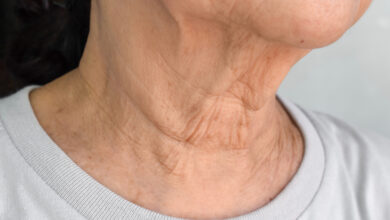Arm Pain: Causes, Symptoms, and Effective Treatment

Arm discomfort may be severe, affecting people of various ages and activities. Whether you’re an athlete, an office worker, or a stay-at-home mom, stiffness or soreness in your arms may have a substantial influence on your daily activities and general well-being. In this thorough guide, we will look at the numerous causes of arm pain, typical signs to look out for, and effective treatments to relieve discomfort and promote recovery.
Prosoma 500mg is mostly formed of the active component carisoprodol. Carisoprodol is a muscle relaxant used to relieve muscular spasms and pain. It works by altering neuronal transmission in the central nervous system, which helps to relieve muscular discomfort and tension.
Common Causes of Arm Pain:
1. Musculoskeletal Injuries.
Musculoskeletal injuries are one of the most common causes of arm discomfort. These injuries may result from acute trauma, repeated motions, or overuse of the muscles and joints. Common musculoskeletal diseases causing arm discomfort include:
Strains and sprains occur when muscles and ligaments are overstretched or torn.
Tendonitis is an inflammation of the tendons that is commonly induced by repeated movements.
Fractures are broken bones in the arm that occur as a consequence of falls or accidents.
2. Nerve compression syndromes
Nerve compression disorders, such as carpal tunnel syndrome and cervical radiculopathy, may result in radiating pain, numbness, and tingling in the arms and hands. These diseases develop when nerves in the neck, shoulder, or wrist get crushed or inflamed, causing sensations that intensify with movement or certain postures.
3. Arthritis
Arthritis is a chronic illness that causes inflammation of the joints. Osteoarthritis occurs when the cartilage that protects the ends of the bones breaks away over time, causing pain, stiffness, and a restricted range of motion in the afflicted joints. Rheumatoid arthritis may also affect the joints in your arms, producing inflammation and tissue damage.
4. Repetitive Strain Injuries.
Individuals who participate in repeated activities or vocations, such as typing on a keyboard or working on an assembly line, may acquire repetitive strain injuries in their arms. These injuries, often known as overuse injuries, may cause persistent discomfort, inflammation, and impaired function in the afflicted muscles and tendons.
Prosoma 350mg is generally used as a muscle relaxant. Its primary element is carisoprodol, which acts by inhibiting pain signals between neurons and the brain. It is often recommended for the temporary alleviation of acute musculoskeletal pain or discomfort. Prosoma 350mg should be taken with caution and under the supervision of a healthcare expert, since it has habit-forming properties and may produce drowsiness or dizziness.
1. Persistent pain or discomfort.
One of the most common symptoms of arm pain is chronic discomfort or pain in the afflicted region. This discomfort might be slight or severe, and it may aggravate with specific motions or activities.
2. Limited Range of Motion.
Individuals with arm discomfort may experience a reduction in their range of motion. Simple actions like reaching upwards, lifting items, and carrying out everyday chores may become difficult owing to arm stiffness or soreness.
3. Numbness or tingling sensations.
Nerve-related arm discomfort may manifest as numbness or tingling in the arms and hands. These feelings might occur occasionally or consistently, and they may be accompanied by weakness or muscular exhaustion.
4. Swelling or inflammation?
Inflammation or swelling in the arms might signify a musculoskeletal injury or an inflammatory disorder. A healthcare expert should assess any redness, warmth, or apparent swelling in the afflicted region.
Effective Treatments for Arm Pain:
1. Rest and immobilisation
For acute injuries or disorders that cause arm discomfort, rest and immobilisation of the afflicted limb may be required to facilitate healing and avoid additional harm. Avoiding activities that cause discomfort and employing supporting devices like slings or braces may help with rehabilitation.
2. Physical therapy.
Physical therapy is an essential element of arm pain treatment, especially for musculoskeletal injuries and repetitive strain diseases. Therapeutic exercises, stretching methods, and manual treatment may all assist to increase strength, flexibility, and range of motion in the afflicted muscles and joints.
3. Medications
Over-the-counter pain medications like ibuprofen or acetaminophen may give brief relief for arm discomfort and inflammation. In certain circumstances, prescription drugs or corticosteroid injections may be used to treat severe or chronic symptoms.
4. Surgery.
In situations of serious injury or structural damage, surgical intervention may be required to restore damaged tissues or relieve nerve pressure. Surgical techniques such as arthroscopy, nerve decompression, or joint replacement may be explored depending on the underlying reason of arm discomfort.
Conclusion
Arm discomfort may result from a number of reasons, including musculoskeletal injuries, nerve compression syndromes, and inflammatory disorders such as arthritis. Recognising the signs of arm pain and obtaining treatment in a timely manner is critical for symptom management and recovery. Individuals may find relief from arm pain and restore functioning to their everyday lives by following a comprehensive treatment plan that includes rest, physical therapy, medicines, and, if required, surgical intervention.



